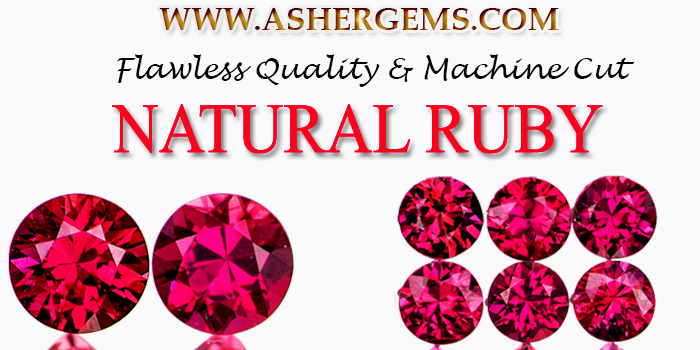The Enchanting Chemistry Behind the Ruby's Red Hue
The Enchanting Chemistry Behind the Ruby's Red Hue

The mesmerizing beauty of gemstones has fascinated humankind for centuries, and among these, the ruby stands out with its fiery red brilliance. This bewitching shade of red hasn't just been a symbol of passion, power, and royalty but has also piqued the interest of scientists and gemologists. What gives the ruby its captivating color? And why do we find it so irresistibly beautiful? The answers lie in the fascinating world of chemical compositions and human psychology.
The Chemistry of Color: Ruby’s Red
At its core, a ruby is a variety of the mineral corundum. While pure corundum is colorless, the presence of certain trace elements can imbue it with vibrant hues. In the case of rubies, it's the element chromium that's responsible for their characteristic red color.
When chromium atoms replace some of the aluminum atoms in the corundum's crystal lattice, they absorb specific wavelengths of light due to their unique electron configuration. The absorbed light is then re-emitted as a brilliant red hue, a process that involves the way chromium's electrons absorb and reflect light. Specifically, chromium absorbs the blue and green wavelengths of light, allowing only the red wavelengths to pass through. As a result, we see the ruby in its iconic red shade.
Additionally, the intensity of the red can vary depending on the concentration of chromium. Higher concentrations usually result in deeper, more vivid reds. However, it's a delicate balance; too much chromium can lead to a dark, almost opaque stone, diminishing its allure.
The Allure of Red: Psychological and Cultural Aspects
Beyond the chemistry of the ruby's color lies the question of why humans find it so entrancing. The allure of the color red, and by extension the ruby, is rooted in both evolutionary biology and cultural symbolism.
From an evolutionary standpoint, the color red has always been a signifier of vital elements. It's the color of blood, a vital life force, and often indicates ripeness in fruits, making them safe and nutritious to consume. As a result, our ancestors developed an instinctual attraction to the color, associating it with sustenance and vitality.
Culturally, red has been a color of power, passion, and desire across many civilizations. In Chinese culture, red symbolizes luck and prosperity. In Western cultures, it's often associated with love, passion, and courage. When you combine the natural attraction to the color with its rich cultural significance, it's no wonder the ruby has been revered for centuries.
The bewitching red of the ruby is a perfect marriage of chemistry and cultural allure. On one hand, the presence of chromium atoms in the corundum lattice gives rise to the ruby's signature hue, a testament to nature's artistry on the microscopic level. On the other hand, our innate and cultural attractions to the color red make the ruby an object of desire, symbolizing everything from love and power to luck and prosperity.
So, the next time you find yourself entranced by the deep, fiery glow of a ruby, remember the fascinating journey of light and chemistry that gives it its iconic color, and the deep-seated reasons we humans find it so irresistibly beautiful.
Recent Posts
-
Understanding Specific Gravity (SG) in Gemstones
When it comes to identifying gemstones, beauty alone isn’t enough. Gemologists rely on physical p …18th Sep 2025 -
Discover the Magic of Madagascar Blue-Green Sapphire
Discover the Magic of Madagascar Blue-Green Sapphire If you’re a gemstone lover, you’ve surely heard …11th Jul 2025 -
Champagne Sapphire: A Unique Sparkle in the Sapphire Spectrum
Champagne Sapphire: A Unique Sparkle in the Sapphire Spectrum Champagne sapphire is an elegant and u …26th May 2025